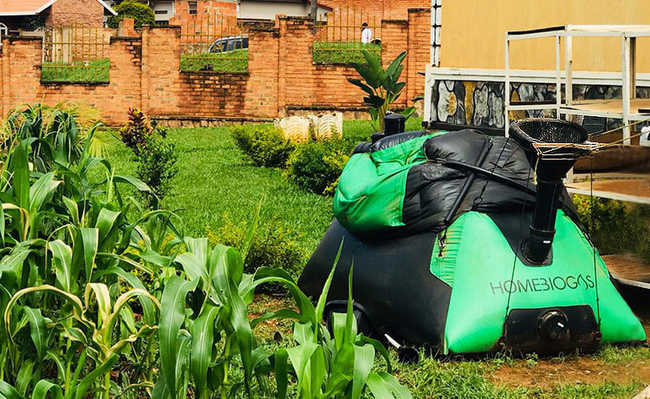Residential Biodigester transforms waste into gas and fertilizer
Residential Biodigester is a system capable of producing cooking gas and fertilizer from organic waste

Image: Disclosure/HomeBiogas
The biodigester is a system that performs the anaerobic decomposition (without oxygen) of organic waste, such as pet feces and food waste, and generates biogas and biofertilizer as a product. This system is known to be used in rural areas to treat agricultural waste, on farms and farms, for example. But there is also the residential biodigester, a smaller model that can be used both in rural properties and in urban residences. It is compact, efficient and cost effective.
Use of biodigesters
The residential biodigester is divided into two parts: the anaerobic digester and the gasometer located at the top. Any type of biomass can be placed in the digester, such as food waste, grass, pet and even human feces, among other organic waste. The production will not be significant using only food, the ideal is to feed the biodigester with food waste and feces. Minerals such as sand and stones cannot be inserted, as they are inorganic materials that are not decomposed by bacteria.
All the organic matter inserted in the residential biodigester will serve as food for the bacteria that decompose this material, generating, as a product of the reaction, biogas and biofertilizer. As a recommendation, the ideal is for the residential biodigester to be fed half by solid waste and half by liquid, and the process is faster and more efficient if the waste goes through a grinder before going to the biodigester (the smaller the particle, it will deteriorate faster and generate more gas).
The residential biodigester must be located in an aerated and sunny place because the bacteria need heat to multiply quickly, as the process is anaerobic, there are no odor problems and it can be installed close to homes. Maintenance is simple, the valve must always be observed, which must be at the same level as the water and the cleaning of the residential biodigester is done through a bottom drain.
Production and use of biogas

Image: Recolast/Disclosure
The residential biodigester takes around 30 days to start producing biogas. The production is equivalent to one gas cylinder per month, which may vary depending on the type of biomass (residue), temperature, particle size and residue movement.
The biogas generated by the process is stored in the gasometer and transported through a hose to the location where it will be used. The equipment that will receive the biogas may need to be adapted to receive the gas. For example: if you are going to use biogas in a traditional stove, the stove's inlet nozzle will have to be adapted, as the biogas nozzle has a larger diameter (because biogas has a lower pressure than natural gas).
Production and use of biofertilizer
The amount of biofertilizer generated is directly proportional to the amount of waste inserted into the residential biodigester, that is, if you feed the biodigester with the volume of a bucket (20 liters) per day, you will generate 20 liters of biofertilizer. In general, the residential biodigester kit already comes with a container to collect the biofertilizer that will be generated by the biodigestion process.
The biofertilizer generated is rich in nutrients (N, P, K), and can be used to irrigate a vegetable garden, for example. However, if you do not have a place to use it, nor a neighbor to donate to, you can dispose of this material in any liquid disposal site, except for rivers and springs in general.
The residential biodigester is a quick and efficient solution for the treatment of organic domestic waste. It is ideal for homes and/or rural properties, and can be assembled by the user. Products of this type are accompanied by a manual.Want to know more? See more details about available equipment and see prices at eCycle store.










